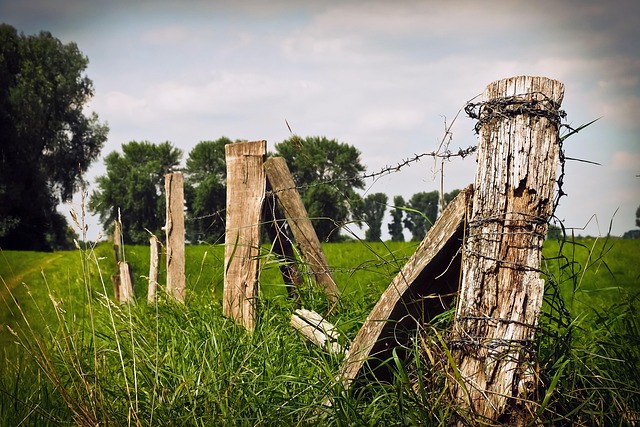DIY Fence Installation Tips for New Bedford, Massachusetts Homeowners
Installing a fence is an excellent way to enhance your New Bedford property’s curb appeal and provide privacy. This guide offers comprehensive DIY tips tailored to the unique considerations of New Bedford homeowners. From understanding local fencing options and obtaining necessary permits to measuring your yard accurately and planning each step, we’ll walk you through the process. We also provide a detailed installation guide and essential maintenance tips to ensure your fence stands the test of time in this vibrant Massachusetts community.
- Understanding Your Fence Options for New Bedford Yards
- Planning and Permitting: Essential Steps Before Installation
- Measuring and Preparing Your Property for the Fence
- Step-by-Step Guide to DIY Fence Installation
- Maintenance Tips for a Long-Lasting New Bedford Fence
Understanding Your Fence Options for New Bedford Yards
When it comes to fencing your New Bedford, Massachusetts yard, homeowners have a variety of options to consider. The first step is understanding the types of fences available and which one aligns best with your property’s unique characteristics and personal aesthetic preferences. Wood remains a popular choice for its natural beauty and classic appeal, while vinyl offers low-maintenance advantages and a wide range of styles. Chain link fences are both sturdy and affordable, ideal for security concerns or large yards. Each material comes in various designs, from traditional picket fences to more modern, sleek options.
In New Bedford, climate plays a significant role in fence selection. Homeowners should choose materials that can withstand the region’s seasonal changes, including harsh winters and warm, humid summers. Additionally, local regulations regarding fence height and materials should be taken into account to ensure your installation complies with city codes.
Planning and Permitting: Essential Steps Before Installation
Before tackling your DIY fence installation project, planning and permitting are crucial steps to ensure a smooth process and avoid any legal issues. Start by checking with your local New Bedford, Massachusetts authorities to understand the regulations and permits required for fence installation in your area. Different municipalities have varying rules regarding fence height, materials, and placement, so it’s essential to get these details beforehand.
Research the specific requirements for your property, including set-back guidelines from property lines and any restrictions on fencing materials. Once you have this information, create a detailed plan that includes measurements, material choices, and potential challenges. This will help guide your project and ensure compliance with local regulations, setting a solid foundation for your DIY fence installation.
Measuring and Preparing Your Property for the Fence
Before you begin installing your new fence, it’s crucial to spend time measuring and preparing your property. Start by inspecting your yard and identifying the exact locations where you want the fence to be installed. Mark these areas with stakes and string to create a visual outline. This will help ensure the fence aligns with your desired layout and boundaries.
Next, clear any debris or obstacles from the designated fence line. Remove old fencing, plants, rocks, and other items that might interfere with the installation process. Trimming any overhanging branches is also essential to maintain a clear path for constructing the fence properly. Proper preparation will make the installation smoother and more efficient, ensuring a secure and aesthetically pleasing result.
Step-by-Step Guide to DIY Fence Installation
Installing a fence yourself can be a rewarding project for New Bedford homeowners looking to enhance their outdoor space. Here’s a straightforward guide to help you navigate the process, ensuring a sturdy and aesthetically pleasing result. Start by assessing your yard and deciding on the type of fence best suited to its shape and function—wooden, vinyl, or chain-link each have unique advantages. Obtain all necessary materials, including posts, panels, tools for digging holes, and fasteners. Clear a path for your fence line, removing any vegetation or obstacles, marking the perimeter with chalk for precision. Dig post holes at the marked locations, ensuring they are deep enough to support the fence’s weight. Set the posts in place, level them up, and backfill the holes with concrete, allowing it to set completely. Attach the fence panels to the posts using brackets or nails, securing them tightly.
Maintenance Tips for a Long-Lasting New Bedford Fence
Regular cleaning and inspection are key to maintaining your New Bedford fence’s longevity. Start by sweeping or hosing down the fence at least once a month, removing any debris, leaves, or grit that could damage the surface. Use a soft-bristled brush for wooden fences to gently scrub away mildew or mold. For metal fences, a mild detergent and a soft cloth can help keep them looking fresh.
Inspect your fence regularly for signs of wear and tear, such as loose posts, rotted wooden parts, or rusted metal components. Promptly repairing these issues will prevent further damage and ensure the structural integrity of your fence. Don’t forget to check the bottom of the posts for any signs of shifting, as this could indicate a need for re-leveling or even replacing the footing.
